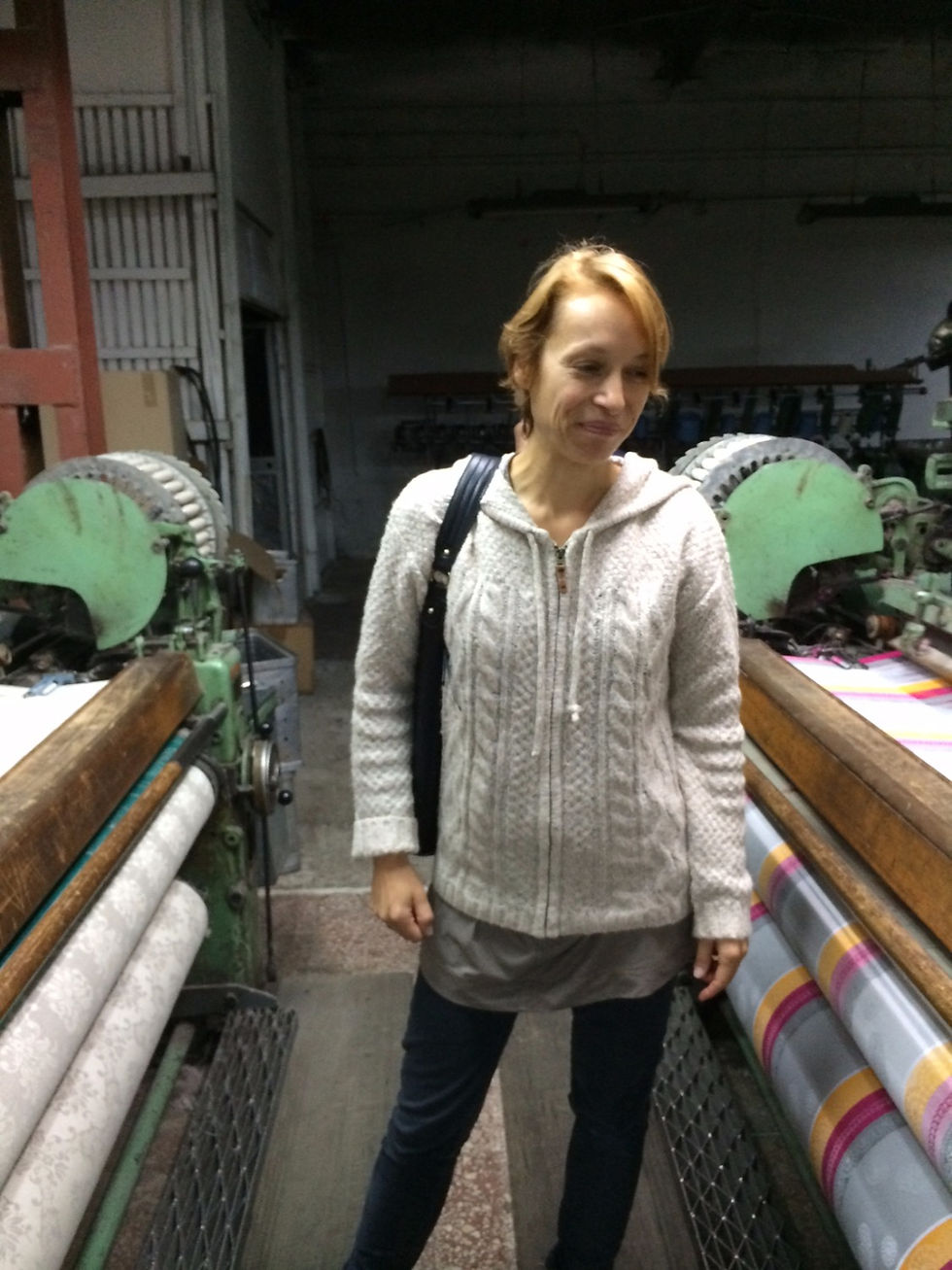Made in Poland
- By Julia Brendel
- Sep 25, 2017
- 4 min read
Linen is always associated with France but did you know that Poland was a Linen Empire in XIX? Our table linen is made on looms in Zyrardow, a town that was created for one purpose only! To weave linen!
I am getting on a fast train from my home city Poznan to Warsaw - only my intermediate stop before I head to my final destination, a city about an hour’s distance from the Polish capital.
As I approach my destination, my heart starts to race. I know what to expect, I have been here before.
As I get off the train, I take a taxi, passing red bricked buildings everywhere, some, impressive examples of the industrial architecture of the early XIX century. Tate Modern comes to mind. No, Tate Modern is just a one big building sticking out like an island. Here it’s more like a forest, a labyrinth of red shaped structures with tall metal windows and an industrial feel about them only somehow stripped of their soul and purpose. It’s like one big body that had once been buzzing with life, with the sounds of working machines, an atmosphere of creation. It is more like Manchester.
We are in Zyrardow, a place that was dedicated entirely to one purpose and one purpose only. The entire infrastructure, mills, weaving, spinning factories, houses, train station, schools, retirement homes, hospital, post office, churches for different faiths and shops were created to make linen cloth and to serve people who worked in those factories and their families. The City’s Gardens were awarded a gold medal in Paris in1900.


In 1828, The Brothers Lubienscy brought from France an engineer and inventor of a machine for the mechanical spinning of linen, called Fillip de Girard (therefore the name of the city – Zyrardow). They made him the first technical director of the establishment. In the second half of XIX, the factory was bought by two Germans, Karol Dittrich and Karol Hille who modernized and expanded the scale of the factory and it became the most potent linen manufacturing plant throughout Europe. Linen cloth coming from the looms and products made out of it, were exported not only to other European countries but also to Russia, Asia and the Middle East. The new owners built an entire social infrastructure for people who worked in the factory including nurseries, schools, hospitals, halls and churches.

There was a geometric network of streets with housing for workers and different living zones for the directors of the company; there were green areas, parks and an industrial area all built according to the rule of an ideal city. This was a masterpiece of urban planning.
Zyrardow was a multicultural city. People who lived here were from varied backgrounds and nationalities: Poles, Jews, Germans, Czechs, French, Russians, English (doctors and lawyers), Scottish, Irish and Austrians as well as believers in different religions: Catholics, Anglicans, Evangelicals, Baptists, Orthodox and a large number of Moises (Jews).; a truly cosmopolitan place.
The manufacturing plants survived WWI and WW2.


They managed to operate well during hard Communist times.

They lost their steam at the end of the XX century. Too much competition from cheap products from China flooded Europe.

Zyrardow to this day is a proud survivor as an example of an industrial city from the turn of XIX and XX centuries. It is unique in an European context and it is a shame it has largely lost its original purpose. Many buildings changed use. There are now luxury flats, restaurants and shops.
My taxi pulls up. Among the big brick buildings there is a smaller one with the render coming off its walls. We enter “ Lniane Tkaniny Zakardowe” (Linen Jacquard Textiles) .
It’s loud. My heart races again. “Tuboom, tuboom” There is a pulse and rhythm from the working looms and I am trying not to feel emotional about it but somehow, I have tears in my eyes.

It is the last bastion of that grandeur, of that magnificence, that once was the essence of this City. It feels like it is the last boat on this rough sea with Mr. Andrzej Borzykowski (the owner) being the proud Captain that will hold on for as long as he has to.
Beautiful linen and cotton fabric is born on each of his 15 maybe 20 looms. I stand there in some kind of a trance and don’t want to leave. I want it louder and bigger and proudly magnificent again. It could be couldn’t it? It has all that is needed already here.

We sit down and sip our strong earl grey tea. I take out my phone and record Mr. Borzykowski answering my questions. Why, why did it go from a weaving empire to just him?
Answers are predictable but it is still a lot to take in. It is once again down to our turbulent Polish history; being in between geographic and therefore political wars, instability, lack of our own Government’s bigger picture for the Polish economy after the collapse of Communism, being bought out by international businesses and shut down as competitors, the flood of cheap goods from China and Turkey. There used to be more places like Zyrardow: there was Lodz and Silesia, all big weaving industrial centres, all almost gone. Another grocery shop, another industrial red-bricked building converted to luxury flats and restaurants, shopping malls.


I quietly salute Mr. Borzykowsi for not selling his establishment to an investor, for not making another supermarket that creates an illusion that society needs to buy more cheap goods. He continues this beautiful tradition and manufactures amazing linen and cotton cloth.

Lots of my own designs are born on those looms.
It feels good, it feels right to manufacture here, in Zyrardow!






















































Comments